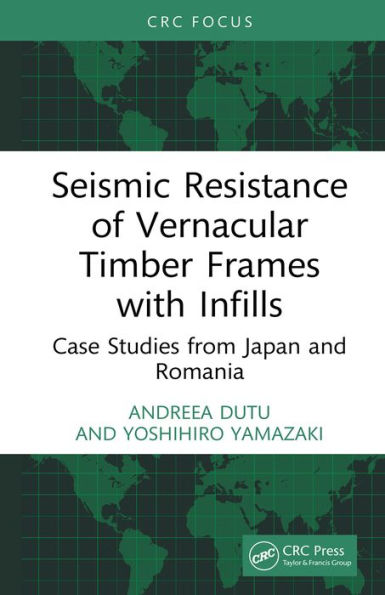This book provides an engineer’s perspective on the traditional construction methods for timber frames with infills, focusing on traditional paianta houses in Romania and minka houses in Japan to provide insights into the construction, seismic behavior, and design considerations of such structures.
The nuances of each country’s traditional construction methods are considered, as well as the shared seismic culture and the similar functionality and local materials used for the houses, plus challenges from earthquake loading and fire. The efforts to preserve traditional houses in Romania are contrasted with Japan’s regulatory framework for traditional residential construction methods. Strengthening solutions are also proposed for timberframed houses with infills, considering various causes of degradation.
• Introduces examples from non- seismic and seismic- prone countries.
• Provides a comparative analysis of worldwide examples.
• Presents design examples illustrating the integration of traditional architecture with modern design standards.
The book serves as a comprehensive guide to the engineering intricacies of traditional houses in Romania and Japan for engineers and architects, with practical applications for new constructions worldwide.
This book provides an engineer’s perspective on the traditional construction methods for timber frames with infills, focusing on traditional paianta houses in Romania and minka houses in Japan to provide insights into the construction, seismic behavior, and design considerations of such structures.
The nuances of each country’s traditional construction methods are considered, as well as the shared seismic culture and the similar functionality and local materials used for the houses, plus challenges from earthquake loading and fire. The efforts to preserve traditional houses in Romania are contrasted with Japan’s regulatory framework for traditional residential construction methods. Strengthening solutions are also proposed for timberframed houses with infills, considering various causes of degradation.
• Introduces examples from non- seismic and seismic- prone countries.
• Provides a comparative analysis of worldwide examples.
• Presents design examples illustrating the integration of traditional architecture with modern design standards.
The book serves as a comprehensive guide to the engineering intricacies of traditional houses in Romania and Japan for engineers and architects, with practical applications for new constructions worldwide.

Seismic Resistance of Vernacular Timber Frames with Infills: Case Studies from Japan and Romania
158
Seismic Resistance of Vernacular Timber Frames with Infills: Case Studies from Japan and Romania
158Related collections and offers

Product Details
| ISBN-13: | 9781040034606 |
|---|---|
| Publisher: | CRC Press |
| Publication date: | 03/28/2024 |
| Sold by: | Barnes & Noble |
| Format: | eBook |
| Pages: | 158 |
| File size: | 29 MB |
| Note: | This product may take a few minutes to download. |
